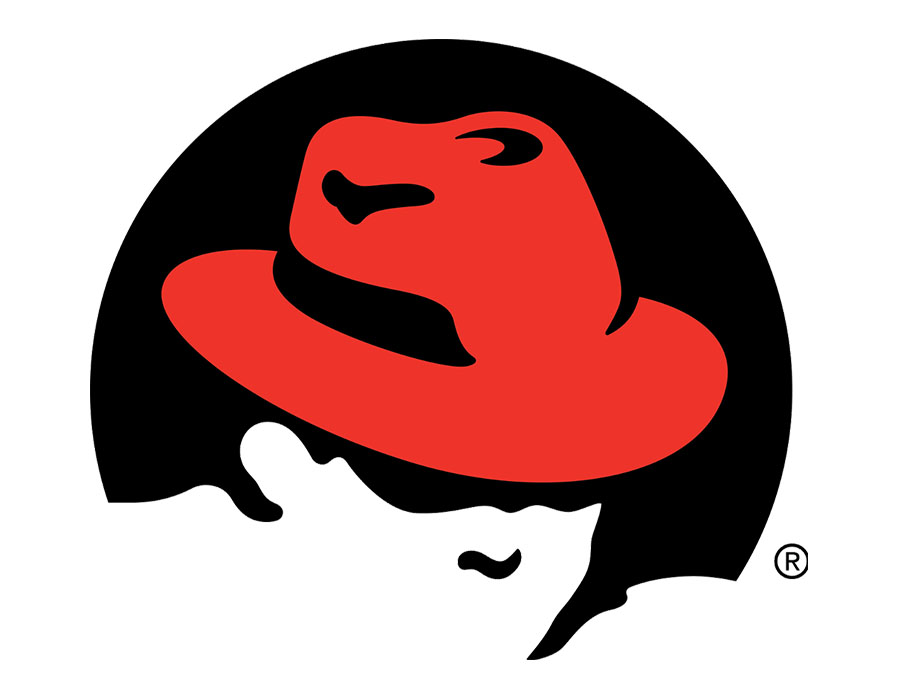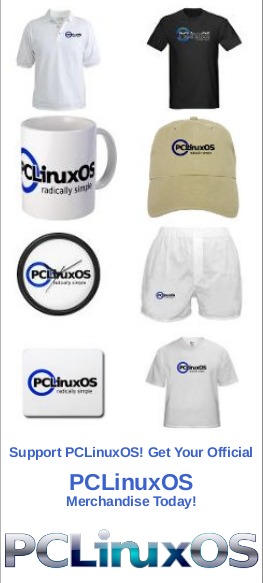| Previous
Page |
PCLinuxOS
Magazine |
PCLinuxOS |
Article List |
Disclaimer |
Next Page |
Short Topix: Linux Is Changing The Face Of End-User Computing |
|
by Paul Arnote (parnote)  Apple "Lock In" Extends To Third Party Repairs There is no question. Apple makes and sells some pretty amazing hardware. Apple hardware comes at a premium price. You definitely pay for it, but the old adage "you get what you pay for" has been interpreted literally by Apple. It is pricey. Despite the quality that Apple is typically known for, there are many potential users who simply cannot afford to use their products. There are even more potential users who are turned off by the Apple-specific accessories that must be used with Apple hardware. Many refer to it as a closed and controlled ecosystem. Buy an iPhone, for example, and you can ONLY use Apple's proprietary Lightning port to charge your phone and add accessories. Contrast that with most other Android phones, where the port generally used is either a Micro USB or USB-C. Many PC users have/can/do perform(ed) many of their own repairs on their laptops. Doing so with an Apple Mac laptop isn't for the faint of heart, since Apple even goes so far as to use proprietary screws and specially designed tools to prevent users from doing self repairs. The net effect is to herd users into the overpriced official Apple repair centers. Capitalism and competition being what they are, there is a whole sub-industry of repair shops that have attempted to offer much more competitive repair prices, without the usually long wait to get hardware back, than those that plagues Apple's "official" repair centers. Apple is fighting back against those entrepreneurial repair shops in a vicious and unique way, at least when it comes to the repairs of 2018 MacBook Pros and iMac Pros, according to an internal document distributed to Apple's Authorized Service Providers in late September. The 2018 MacBook Pros and iMac Pros feature Apple's T2 security chip. If any "unauthorized" person or company attempts an "unauthorized" repair to the display, logic board, Touch ID, and top case, which includes the keyboard, battery, trackpad, and speakers of a MacBook Pro, or the logic boards and flash storage on the iMac Pro, the repair is rendered incomplete if Apple's proprietary software diagnostic tools are not used. The result is an inoperable system for the customer until an official Apple repair center is able to run the proprietary software diagnostic tools. Of course, Apple doesn't make the software available to just anyone. According to an article at Motherboard: The AST 2 System Configuration suite is a diagnostic software that Apple uses to ensure that the computer is functioning properly. It includes the Mac Resource Inspector, which does a "quick health check of hardware and software," as well as tools that check the system's memory, display, power adapters, cooling system, and other aspects of the computer. It functions only if connected to Apple's Global Service Exchange (GSX), a Cloud-based server that Apple uses to handle repairs and service. It requires a login from Apple to access. Apple has not yet activated this hardware lock on unauthorized repairs, but it appears that such action is not only possible, but imminent. Count on the fact that it WILL happen at some point. Repair experts at iFixIt managed to successfully swap out both the display and logic board from the teardown model of the MacBook Pro that they purchased earlier this summer with the display and logic board of a brand new one they went out and purchased. Everything remained fully operational, despite diagnostics software not having been run. For what it's worth, iFixIt is NOT an authorized Apple repair agent, and as such, does not have access to the proprietary diagnostics software that is only available through official Apple repair channels. The Motherboard article explores this topic rather deeply and completely. At issue is the whole debate over "right to repair." Apple joins John Deere and a handful of other manufacturers in trying to limit repairs to its products to be available ONLY at authorized repair centers. The video (only 11:23 in length) in the Motherboard article, while dealing primarily with the right to repair issue with John Deere, sheds a lot of light on what's at stake for end users, regardless of the vendor or industry. Even more disturbing is the potential for planned obsolescence of perfectly good hardware. Whenever Apple decides to stop supporting a particular model or platform, then repairs to those aging hardware platforms will not be possible. Thus, the whole of the device will have to be discarded, unless a way can be found to circumvent the Apple T2 security chip and its mandatory, proprietary software diagnostics software tie-in.  Who Is The Largest Contributor To Open Source? Veteran technology columnist Matt Asay wrote an interesting article in September that took a look at who is the largest contributor to the open source community. By sheer numbers of contributors, the casual observer may get the impression that Microsoft is the largest contributor to the open source community. They have more than 4,000 employees contributing to open source projects on GitHub. Keep in mind that Microsoft recently purchased GitHub, too. In second place -- by sheer numbers -- is Google (1,850), followed by Red Hat in third place (1,549). But, Asay makes the argument that the sheer numbers don't necessarily tell the entire story. He changes the yardstick, so to speak, to compare the number of contributors to the number of employees a company employs. Now, when you look at the percentages, the ranking of open source contributors changes dramatically. Now look at the rankings (below):
Microsoft, with over 130,000 employees (many of whom have next to nothing to do with software development), now dips from first place, all the way to tenth. Google doesn't even place in the top ten. Red Hat moves from third place to fourth place. It should come as no surprise that Mozilla tops the list, with nearly 40% of its employees actively contributing to open source projects. Mozilla outpaces the second place finisher Pivotal (the makers of VMware) by having over twice the percentage of employees contributing to open source projects.  Linux Is Changing The Face Of End-User Computing As Linux users, we all know the appeal of Linux. But it seems that the rest of the world is learning what we already know and love. Linux is everywhere. Android. Linux Automotive. The desktop. The cloud. Running the OS on your TV, DVD and Blu Ray players. Providing the backbone for IoT. Running supercomputers. Ebook readers. Look around. Linux literally is EVERYWHERE. Jed Ayres, President and CEO of IGEL North America and Global CMO, recently wrote an article for Forbes detailing how Linux is changing the face of end-user computing. IGEL, a technology partner with Microsoft and Intel, paid for the report, which comprised a recent IDC InfoBrief (PDF). In the article, he discusses the rapid and broad use of Linux on endpoint devices. Use of Windows, the stalwart of endpoint devices for years, remains flat with a 39% market share in 2015 and 2017. Linux, however, increased its market share for endpoint devices from 30% in 2015 to 35% in 2017. Linux's growth doesn't seem to be slowing. In fact, if anything, the growth in the use of Linux on endpoint devices appears to be accelerating. The qualities that appear to be contributing to Linux's growth include its being open source (and thus, easily modified to better fit needs), lower cost, increased security, platform flexibility, a high level of performance, and well supported. Now, how do you feel to have been using Linux before the rest of the world thought Linux was cool?  Limiting Children's "Screen Time" To Two Hours Or Less May Improve Cognition It's no secret that my "regular job" is working in the U.S. healthcare industry. Specifically, I am a respiratory therapist working at the bedside to help improve the outcomes for, and provide treatment for, those suffering from lung health issues. On any given workday, I may work with up to 20 different patients suffering with breathing problems. So, it should be no surprise that I also get a lot of healthcare related emails daily. The only way to survive nearly 32 years in this profession is to stay current, and the emails certainly are one way to do that. Couple that with being the parent of a two year old and a five year old, and you'll see why this next bit caught my attention. One of those emails that I receive regularly is from MedPage Today. By far, it is the most prolific, with me receiving several emails a day from their mailing list. MedPage Today offers up medical news from all across the healthcare spectrum. The MedPage article that caught my eye appeared on September 26, 2018. A newly published report in The Lancet Children & Adolescent Health journal suggests that the three largest factors contributing to a child's cognitive development are getting proper amounts of sleep, limiting "recreational screen time" to two hours or less, and adequate amounts of physical activity. According to the report, sleep and screen time are the largest contributor to cognitive ability. Recreational screen time includes recreational time spent on a cell phone, tablet, computer, or in front of the TV. The aforementioned link to the report will get you access to the summary of the report; you will have to pay to view the entire report, however. I'll never understand why studies completed with public funding through a public agency, that potentially have so much impact on society, continue to appear behind restrictive paywalls. Knowledge should be freely shared, and shouldn't bear a price that makes accessible only to those who can afford it can access it. But then, I stray from the topic at hand. This study's results appeared to validate and mirror the Canadian guidelines, which recommend nine to 11 hours of sleep, less than 2 hours of recreational screen time, and at least 60 minutes per day of physical activity for children 5-13 years old. The Canadian guidelines mirror the recommendations from the World Health Organization (WHO) and the National Sleep Foundation with regards to the amount of sleep a child should receive and the amount of physical activity a child should receive. Neither of the latter two agencies, nor the American Academy of Pediatrics (AAP), make recommendations about screen time for children over the age of five. The AAP, through its Council on Communications and Media, has made a statement called Media Use in School-Aged Children and Adolescents, and it regards media use for children 5-18 years of age. I guess our parents were right all along when they told us to shut off the TV and go outside to play.  Apple Finally Lets You Download All Your Data Thanks to the EU's GDPR, American users can now download all of the data collected and retained by Apple on its customers. Ever since the GDPR went into effect this last May, demand has been relatively high for Apple to give its American customers access to the same tools that those in the EU have for accessing their data. To access your data, go to the Apple privacy portal, here. Once there, sign into your account. Find and click on "Obtain a copy of your data." While you can choose which services to request information from, it makes sense to request all of it. Then, you'll have to wait. It can take up to seven days to compile all of your information, which will be sent to you in a ZIP file to your email address. Historically, Apple hasn't been a massive collector of information. So, don't be surprised if the amount of data is relatively small and benign. It most likely won't be anything like the amount of data that New York Times reporter Brian X. Chen found that Facebook and Google had collected on him. Just the Google data was over 8GB! Still, don't get too cozy with Apple. They are not your friend, either.  Forty-Four New Organizations Join The Linux Foundation in September, Continuing Trend of More Than a Member a Day on Average in 2018 SAN FRANCISCO -- October 23, 2018 -- The Linux Foundation, the nonprofit organization enabling mass innovation through open source, announced the addition of 33 Silver members and 11 Associate members in the month of September. Linux Foundation members help support development of the shared technology resources, while accelerating their own innovation through open source leadership and participation. Linux Foundation member contributions help provide the infrastructure and resources that enable the world's largest open collaboration communities. Since the start of 2018, a new organization has joined The Linux Foundation every day and we are honored to be their partners in open source. "We are thrilled to welcome forty-four new members to The Linux Foundation this month," said Jim Zemlin, executive director, The Linux Foundation. "These organizations, which represent industries including technology, education, energy, the service industry and more, are working to create a more collaborative community in order to promote further innovation; we look forward to working with them to help make that happen." In addition to joining the Foundation, many of the new members have joined Linux Foundation projects such as the Cloud Native Computing Foundation, Hyperledger and LF Networking. For a full list of members, visit https://www.linuxfoundation.org/membership/members/. Linux Foundation Silver members are organizations that contribute to or otherwise support open source communities and projects. The new Linux Foundation Silver members who joined in the month of September are:
Associate members of The Linux Foundation include government agencies and not-for-profit organizations that have demonstrated a commitment to building, sustaining, and using open source technologies. The following organizations are new Linux Foundation Associate members:
With the support of its members, The Linux Foundation hosts open source projects across technologies including networking, security, cloud, blockchain, and more. This collaborative development model is helping technology advance at a rapid pace in a way that benefits individuals and organizations around the world.  IBM To Acquire Red Hat, Completely Changing The Cloud Landscape And Becoming World's #1 Hybrid Cloud Provider Armonk, NY and Raleigh, NC -- October 28, 2018 -- via Red Hat press release
"Joining forces with IBM will provide us with a greater level of scale, resources and capabilities to accelerate the impact of open source as the basis for digital transformation and bring Red Hat to an even wider audience -- all while preserving our unique culture and unwavering commitment to open source innovation." Jim Whitehurst, president and CEO, Red Hat IBM (NYSE:IBM) and Red Hat (NYSE:RHT), the world's leading provider of open source cloud software, announced today that the companies have reached a definitive agreement under which IBM will acquire all of the issued and outstanding common shares of Red Hat for $190.00 per share in cash, representing a total enterprise value of approximately $34 billion. "The acquisition of Red Hat is a game-changer. It changes everything about the cloud market," said Ginni Rometty, IBM Chairman, President and Chief Executive Officer. "IBM will become the world's #1 hybrid cloud provider, offering companies the only open cloud solution that will unlock the full value of the cloud for their businesses."Most companies today are only 20 percent along their cloud journey, renting compute power to cut costs," she said. "The next 80 percent is about unlocking real business value and driving growth. This is the next chapter of the cloud. It requires shifting business applications to hybrid cloud, extracting more data and optimizing every part of the business, from supply chains to sales." "Open source is the default choice for modern IT solutions, and I'm incredibly proud of the role Red Hat has played in making that a reality in the enterprise," said Jim Whitehurst, President and CEO, Red Hat. "Joining forces with IBM will provide us with a greater level of scale, resources and capabilities to accelerate the impact of open source as the basis for digital transformation and bring Red Hat to an even wider audience -- all while preserving our unique culture and unwavering commitment to open source innovation." This acquisition brings together the best-in-class hybrid cloud providers and will enable companies to securely move all business applications to the cloud. Companies today are already using multiple clouds. However, research shows that 80 percent of business workloads have yet to move to the cloud, held back by the proprietary nature of today's cloud market. This prevents portability of data and applications across multiple clouds, data security in a multi-cloud environment and consistent cloud management. IBM and Red Hat will be strongly positioned to address this issue and accelerate hybrid multi-cloud adoption. Together, they will help clients create cloud-native business applications faster, drive greater portability and security of data and applications across multiple public and private clouds, all with consistent cloud management. In doing so, they will draw on their shared leadership in key technologies, such as Linux, containers, Kubernetes, multi-cloud management, and cloud management and automation. IBM's and Red Hat's partnership has spanned 20 years, with IBM serving as an early supporter of Linux, collaborating with Red Hat to help develop and grow enterprise-grade Linux and more recently to bring enterprise Kubernetes and hybrid cloud solutions to customers. These innovations have become core technologies within IBM's $19 billion hybrid cloud business. Between them, IBM and Red Hat have contributed more to the open source community than any other organization. "Today's announcement is the evolution of our long-standing partnership," said Rometty. "This includes our joint Hybrid Cloud collaboration announcement in May, a key precursor in our journey to this day." With this acquisition, IBM will remain committed to Red Hat's open governance, open source contributions, participation in the open source community and development model, and fostering its widespread developer ecosystem. In addition, IBM and Red Hat will remain committed to the continued freedom of open source, via such efforts as Patent Promise, GPL Cooperation Commitment, the Open Invention Network and the LOT Network. IBM and Red Hat also will continue to build and enhance Red Hat partnerships, including those with major cloud providers, such as Amazon Web Services, Microsoft Azure, Google Cloud, Alibaba and more, in addition to the IBM Cloud. At the same time, Red Hat will benefit from IBM's hybrid cloud and enterprise IT scale in helping expand their open source technology portfolio to businesses globally. "IBM is committed to being an authentic multi-cloud provider, and we will prioritize the use of Red Hat technology across multiple clouds" said Arvind Krishna, Senior Vice President, IBM Hybrid Cloud. "In doing so, IBM will support open source technology wherever it runs, allowing it to scale significantly within commercial settings around the world." Upon closing of the acquisition, Red Hat will join IBM's Hybrid Cloud team as a distinct unit, preserving the independence and neutrality of Red Hat's open source development heritage and commitment, current product portfolio and go-to-market strategy, and unique development culture. Red Hat will continue to be led by Jim Whitehurst and Red Hat's current management team. Jim Whitehurst also will join IBM's senior management team and report to Ginni Rometty. IBM intends to maintain Red Hat's headquarters, facilities, brands and practices. "IBM's commitment to keeping the things that have made Red Hat successful - always thinking about the customer and the open source community first -- make this a tremendous opportunity for not only Red Hat but also open source more broadly," said Paul Cormier, President, Products and Technologies, Red Hat. "Since the day we decided to bring open source to the enterprise, our mission has remained unchanged. And now, one of the biggest enterprise technology companies on the planet has agreed to partner with us to scale and accelerate our efforts, bringing open source innovation to an even greater swath of the enterprise." Financial Details The acquisition of Red Hat reinforces IBM's high-value model. It will accelerate IBM's revenue growth, gross margin and free cash flow within 12 months of closing. It also will support a solid and growing dividend. The company will continue with a disciplined financial policy and is committed to maintaining strong investment grade credit ratings. The company will target a leverage profile consistent with a mid to high single A credit rating. The company intends to suspend its share repurchase program in 2020 and 2021. At signing, the company has ample cash, credit and bridge lines to secure the transaction financing. The company intends to close the transaction through a combination of cash and debt. The acquisition has been approved by the boards of directors of both IBM and Red Hat. It is subject to Red Hat shareholder approval. It also is subject to regulatory approvals and other customary closing conditions. It is expected to close in the latter half of 2019. |






